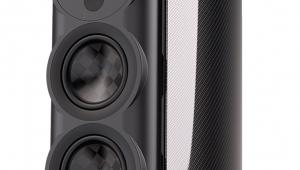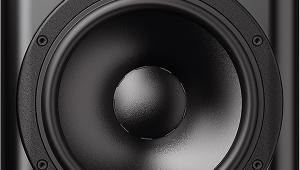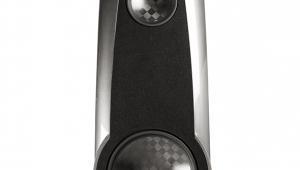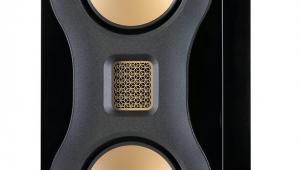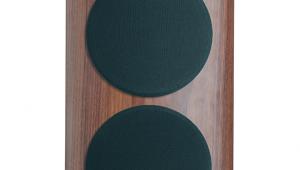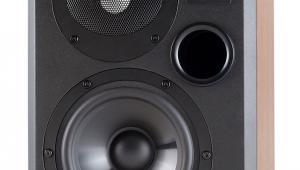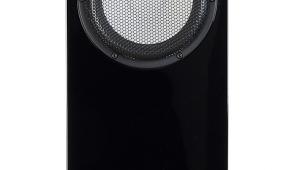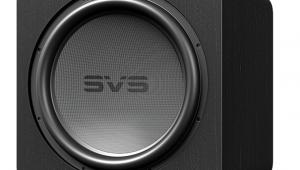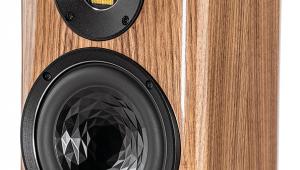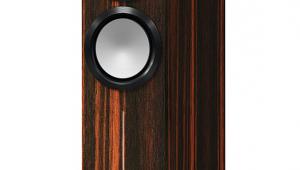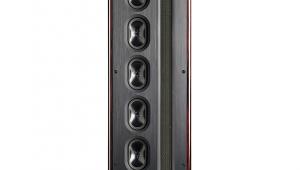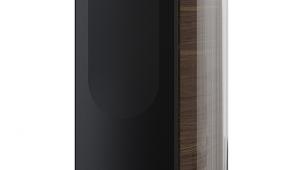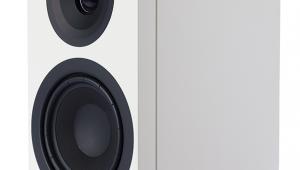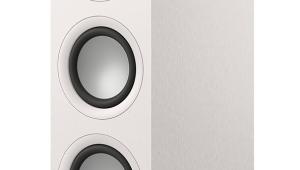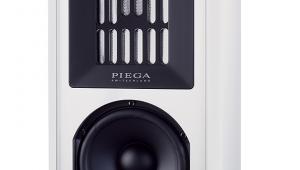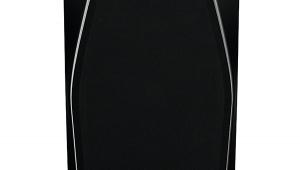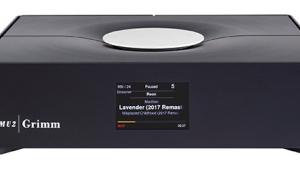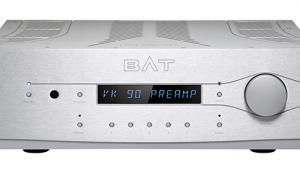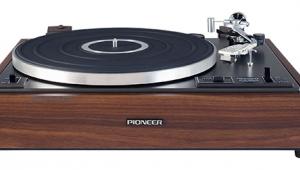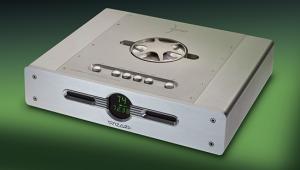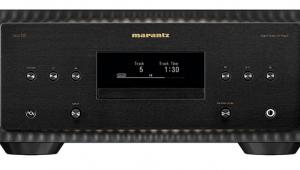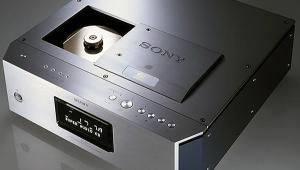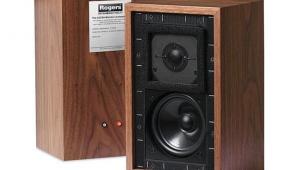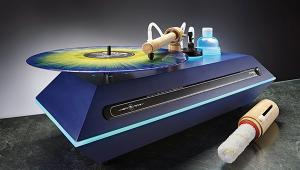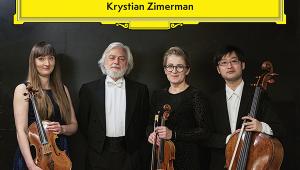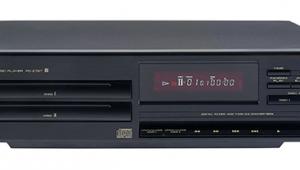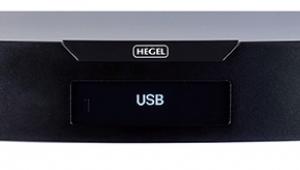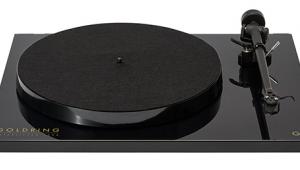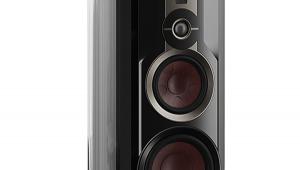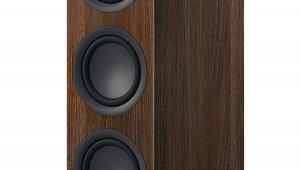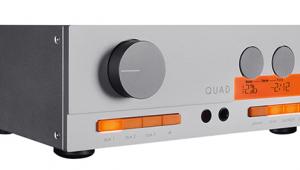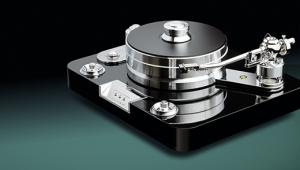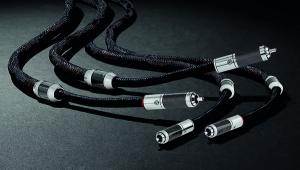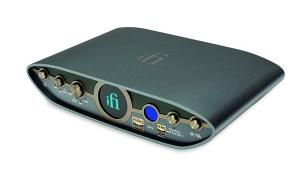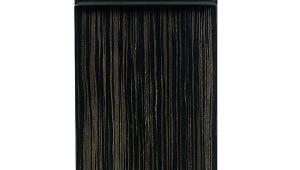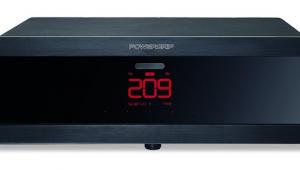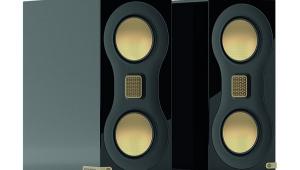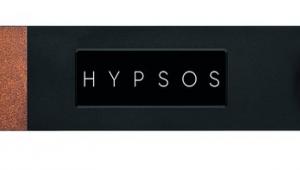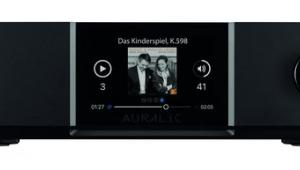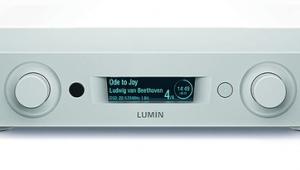Canton Reference 9 Standmount
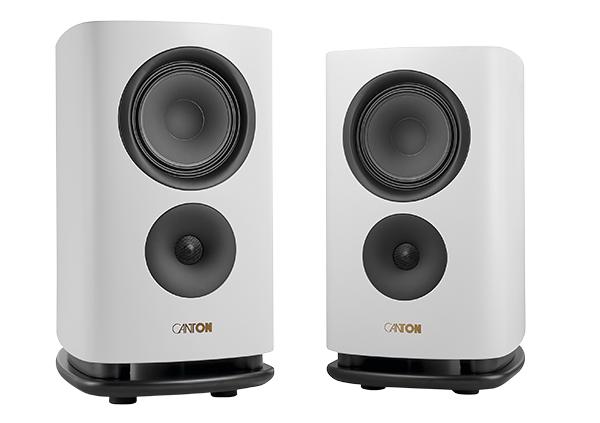

Although it’s relatively easy to build a large ‘cost no object’ loudspeaker worthy of a brand’s flagship, things get a little trickier when the requirement is for a compact model. Quite apart from the budget constraints – customers believe there should be a direct relationship between size and price – there’s the small matter of ‘you can’t argue with physics’ when it comes to delivering a big, room-filling sound from a smallscale enclosure.
German manufacturer Canton is tackling all of that thinking head-on with the Reference 9, the smallest model in its range-topping lineup. Now, £3800 is hardly small change, but then this collection runs all the way to the £21,000 Reference 1 floorstanders. And those are a prelude to the even pricier Reference GS model, limited to 50 pairs worldwide and with a price north of £50,000.
Striking style
Then there’s the matter of size. The standmount Reference 9 is hardly tiny, being 45cm tall including a built-in plinth that provides a vent for its downward-firing bass port. They weigh 18kg each in a choice of black gloss or satin white for the curved cabinet, and are a more striking-looking design than the older, technically unrelated, [Reference 9K]. Much has changed – not least the adoption of an ‘upside-down’ layout [see boxout], with the mid/bass unit above the tweeter. Another change is the ‘downfire’ tuning (as Canton describes it).
This then is designed as a small speaker capable of a big sound, for those tight on space (if not of wallet). The claimed low-frequency extension down to 25Hz may seem somewhat optimistic [see PM’s Lab Report], but the Reference 9 is very much built for ‘main speaker’ use. Alternatively, it might be used for surround sound duties alongside a pair of front floorstanders in a complete Reference multichannel system – there’s also a matching centre channel speaker and an active subwoofer in the series.
Top to bottom
More than 50 years since Canton was founded in 1972, the company still designs, engineers and manufacturers its speakers in Weilrod, north-west of Frankfurt. Its range is extensive, with the Reference line at the top and everything from very conventional bookshelf designs to in-wall, on-wall and surround models below (not to mention soundbars, sub/sat systems and wireless multiroom speakers).
The drive units, crossovers and sculptural cabinets of the Reference series are all made in-house. The 174mm mid/bass unit uses the company’s black ‘ceramic-coated tungsten’ (BCT) cone for claimed speed, rigidity and lightness, plus high internal damping. Similarly, the tweeter also features a metal diaphragm – a 25mm aluminium alloy dome, again ceramic-coated, and mounted quite deeply into a waveguide in the baffle to control its dispersion.
To the rear of the speaker is a set of four small terminals fitted with a jumper bar, enabling a claimed ±1.5dB adjustment of the Reference 9’s tweeter level. This is going to be a matter of taste, but the effect is very subtle: after a short session of undoing the terminals and moving the bar between the + and – connections, I concluded that I preferred the central 0 position. By the way, the larger Reference models offer such adjustments for multiple drivers, which should keep the fiddlers happy!
The front of the speaker is curved, to avoid diffraction effects, and flows nicely into the shaping of the cabinet sides to give a pleasing look of solidity and elegance. Individual ‘pot lid’ grilles are provided for the drivers, affixing magnetically. While these appear smarter than one-piece grilles, and have little subjective effect on the sound, I still prefer the clean look without them in place. Canton’s dedicated Reference LS stands, available in gloss or silk matt finish to match your speaker choice, also look smart, but they’re not inexpensive at £600 a set. Other stands are available...
Connections come in the form of a single pair of WBT ‘Nextgen’ combination terminals – Canton’s old Reference 1K had dual terminals with removable jumper bars for bi-wiring or bi-amping. As with other implementations of these terminals, I’d suggest banana plugs are the best choice, as they feel a bit fragile while trying to clamp them down hard on spades. I’m sure they’d bend rather than break, but I wasn’t willing to find out!
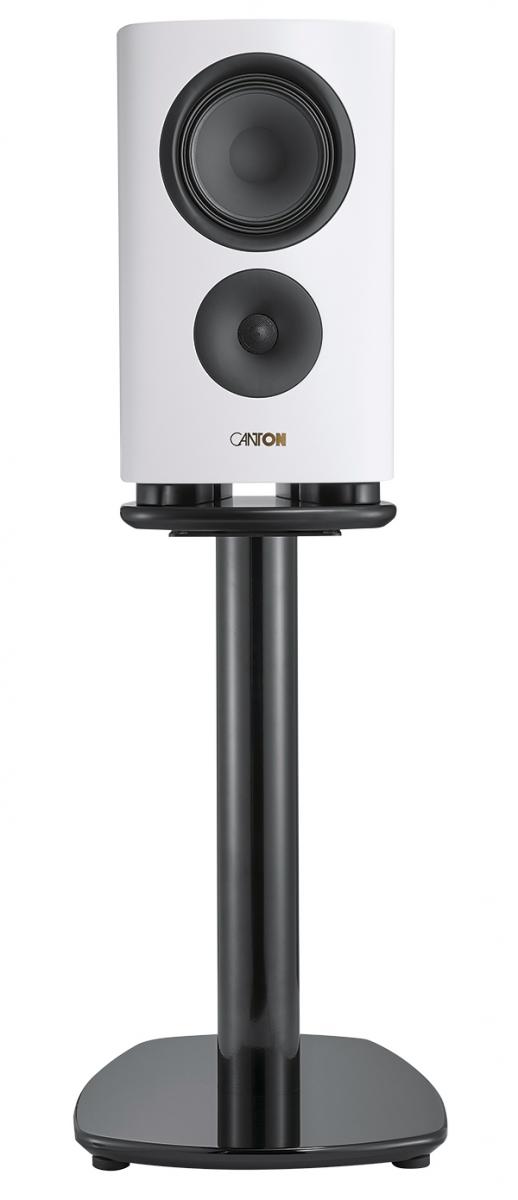
Above:Pictured on its Reference LS stand, with integral cable routing, the Reference 9 is available in white satin and high gloss ‘piano black’ finishes
![]() On the scales
On the scales
With a suggested 87dB sensitivity and an impedance designed not to drop below 4ohm [again, see PM’s Lab Report], the Reference 9s are a relatively easy drive. They worked well with the Naim Supernait 3 amplifier I used, as well as T+A’s rather beefier R 2500 R all-in-one network receiver. Indeed, this all-German setup proved particularly effective, the powerful receiver combining with these compact but muscular loudspeakers to give an impressively largescale sound.
That downward-venting bass reflex system, making its first appearance in a Canton speaker this small, does indeed ensure the Reference 9s are reasonably easy to use. They sounded good around a metre from side and rear walls, albeit with rather more toe-in towards the listening position than one might expect in order to give the best soundstage focus. And focus is what these loudspeakers delivered with Kathryn Tickell’s ‘Sycamore Gap’, from her recent Return To Kielderside release [Bandcamp download]. Beginning with location-recorded birdsong before Tickell’s ethereal Northumbrian pipes appear, it’s a wonderfully atmospheric and heartfelt piece, and the Reference 9’s combination of openness and surprising weight really gripped. There was fine integration between the drivers, compelling soundstaging and excellent timbral resolution.
Night and day
Likewise, but on a rather different scale, Canton’s relatively compact speakers made a good fist of delivering the mood of Richard Strauss’s ‘Eine Alpensinfonie’ [Berlin Philharmonic/Seiji Ozawa, BPHR2404341], where the low drama of night gives way to the exuberance of the mountain sunrise. Yes, larger speakers are capable of giving an even more spellbinding performance, but the way the Reference 9s conveyed the low strings and the rasp of brass wasn’t exactly short of conviction. The sheer presence of bass supremo Pino Palladino’s Notes With Attachments set [Impulse/New Deal 00602435536040] showed not only these speakers’ agility with a strong, detailed bassline, but also their skill at crafting thrilling ‘soundstage pictures’ even with complex tracks. With the snap and drive of ‘Ekuté’ they sparked and fizzed through the music, while the sub-Saharan rhythms of Palladino’s ‘Djurkel’ were infectiously delivered, aided by that pin-point imaging.
Upping the scale to the grandiose mixes of the 2021 remastered release of Pink Floyd’s The Division Bell [Pink Floyd Records download], and the Reference 9s were more than capable of conveying all the impact and detail of the opening ‘Cluster One’. Equally, the more direct songwriting of ‘What Do You Want From Me’, complete with the characteristic guitar parts, backing vocals and precise drumming, sounded magnificent.
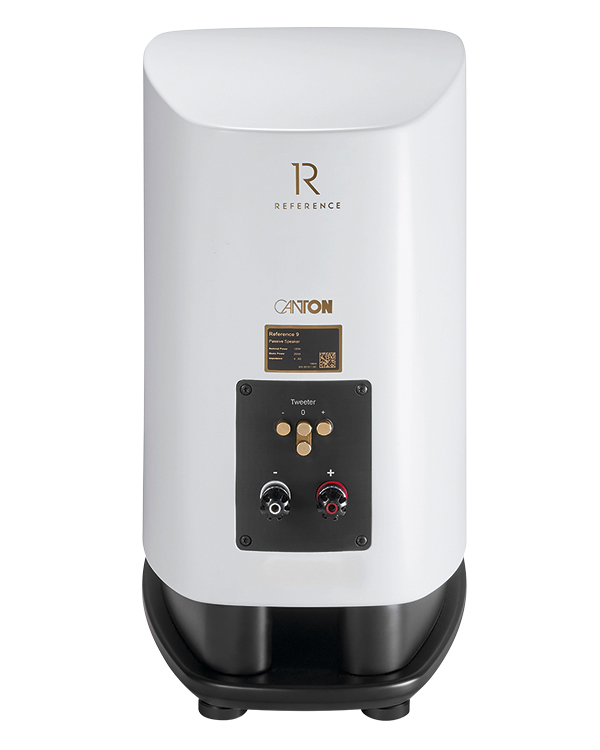
Above:Single sets of 4mm WBT cable terminals are joined by a three-position link for a (claimed) ±1.5dB cut/boost in treble [see PM’s Lab Report]. The downfiring port exits at front and rear of the base
Happy days
These speakers are also unflustered when the volume is cranked up to excitement levels. So much so, in fact, that what began as a critical listen turned into a full play-through of the entire Floyd album. Notepad put aside – which is always a good sign – I had a growing feeling of ‘yes, I could happily live with these’.
Frankly, there are times when Canton’s alloy tweeter can sound a shade sharp and over-informative, especially with cymbals, or sopranos hitting high notes at peak level. However, this is very much recording-dependent and there’s scope to mitigate it slightly with the Reference 9’s treble adjustment. It would be unfair to criticise the design for this trait, for it’s all part of the revealing nature of the loudspeaker, and better by far than an artificial sweetening or softening of the sound. Lastly, it’s also worth noting that the Reference 9s seemed more comfortable with some recordings when played through the grand-sounding T+A receiver, rather than the rather tighter – and highly revealing – Naim amp.
Exhibition time
Playing the Modern String Quartet’s imaginative, jazz-leaning arrangements of Mussorgsky’s Pictures At An Exhibition [Solo Musica SM468], the Reference 9’s combination of control, weight and resolution was very much to the fore. This balanced performance made the most of the interplay of the four musicians and the instrumental timbres, while at the same time placing the performers between and beyond the speakers in a noticeably three-dimensional manner. All this gave the album’s twists on familiar music – and a nod to ELP’s version of the work – plenty of space to breathe. Therefore, while Canton’s smallest References might not be an immediate choice for those seeking a standmount design, it would a mistake to overlook them – these have much to offer.
Hi-Fi News Verdict
Perhaps something of a leftfield choice due to their size, unusual layout and luxury pricing, the baby of Canton’s Reference range is quite a looker, and lives up to its style with an open, weighty sound and excellent imaging. Add in the ease with which it can be placed in the room and responds well to fine amplification, and you have something of a dark horse in a market sector largely populated by more ‘traditional’ designs.
Sound Quality: 86%
